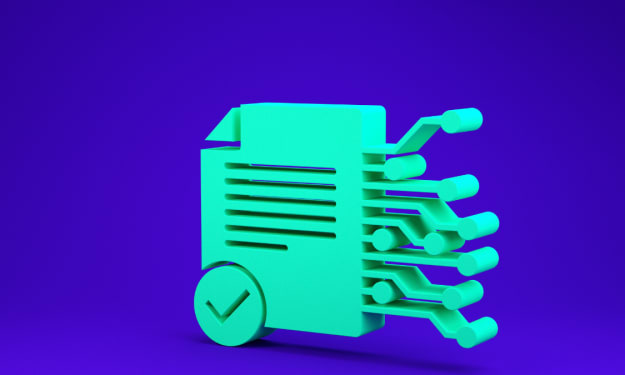Solsea Clone - Features, Benefits, and How to Create One
How to build Solsea Clone, key features, and benefits

Decentralized finance (DeFi) has revolutionized the financial sector by providing users with access to financial services through decentralized platforms. Solana, a high-performance blockchain, has emerged as a popular platform for DeFi due to its fast transaction times and low transaction costs. Solsea, a decentralized exchange built on the Solana blockchain, has quickly gained popularity among DeFi users due to its features and benefits. In this blog, we will explore the features and benefits of Solsea and how to create a Solsea clone.
Features of Solsea
Solsea is a decentralized exchange built on the Solana blockchain, which enables users to trade cryptocurrencies without the need for a centralized intermediary. Some of the key features of Solsea include:
Fast transaction times: Solsea is built on the Solana blockchain, which enables fast transaction times, with a reported capacity of 65,000 transactions per second.
Low transaction costs: Solsea leverages the low transaction costs of the Solana blockchain, which enables users to trade cryptocurrencies without high transaction fees.
Multiple trading pairs: Solsea supports a range of trading pairs, including popular cryptocurrencies such as Bitcoin and Ethereum.
Liquidity pools: Solsea enables users to provide liquidity to trading pairs through liquidity pools, which incentivize users with rewards for contributing to the pool.
Non-custodial: Solsea is a non-custodial exchange, which means users have control over their own funds and do not need to entrust them to a centralized intermediary.
Benefits of Solsea
Solsea offers a range of benefits to users, including:
Fast and cheap transactions: Solsea's use of the Solana blockchain enables fast and cheap transactions, reducing the potential for slippage and enabling users to trade more efficiently.
Decentralization: Solsea is a decentralized exchange, which provides users with greater transparency and reduces the potential for fraud or market manipulation.
Access to new tokens: Solsea supports a range of trading pairs, including new and emerging tokens, enabling users to access new investment opportunities.
Liquidity provision: Solsea's liquidity pools incentivize users to provide liquidity, which can increase the liquidity of trading pairs and reduce slippage.
What is Solsea Clone
A Solsea clone is a decentralized exchange that is built to replicate the features and functionality of Solsea, a popular decentralized exchange built on the Solana blockchain. A Solsea clone can be created by developing a decentralized exchange platform that offers fast transaction times, low transaction fees, multiple trading pairs, and liquidity pools, all of which are key features of Solsea.
The goal of creating a Solsea clone is to provide users with an alternative platform to trade cryptocurrencies that offers the same features and benefits as Solsea. This can be a viable option for entrepreneurs and developers who want to leverage the growing demand for decentralized finance (DeFi) and offer users a decentralized exchange that is fast, cheap, and secure.
Creating a Solsea clone involves developing a decentralized exchange platform that is built on the Solana blockchain or a different blockchain, with features that enable users to trade cryptocurrencies easily and efficiently. The platform must also prioritize security and decentralization, with non-custodial features that give users control over their own funds.
Overall, a Solsea clone offers entrepreneurs and developers an opportunity to tap into the growing demand for decentralized finance and provide users with an efficient and accessible platform for trading cryptocurrencies.
How to Create a Solsea Clone
If you are interested in creating a Solsea clone, there are a few steps you can take:
Choose a blockchain: Solsea is built on the Solana blockchain, but you could choose a different blockchain if you prefer.
Build a decentralized exchange: You will need to build a decentralized exchange that supports fast and cheap transactions, with a range of trading pairs and liquidity pools.
Create a user-friendly interface: Your Solsea clone will need a user-friendly interface that enables users to trade cryptocurrencies easily and efficiently.
Ensure security and decentralization: Your Solsea clone should prioritize security and decentralization, with non-custodial features that give users control over their own funds.
Test and launch: Finally, you should thoroughly test your Solsea clone to ensure it is working as intended, and then launch it for users to trade on.
Conclusion
Solsea has emerged as a popular decentralized exchange on the Solana blockchain, offering fast and cheap transactions, multiple trading pairs, and liquidity pools. If you are interested in creating a Solsea clone, you will need to build a decentralized exchange that prioritizes fast and cheap transactions, a range of trading pairs, and liquidity provision, while ensuring security and decentralization. By creating a Solsea clone, you can tap into the growing demand for decentralized finance and provide users with an efficient and accessible platform for trading cryptocurrencies.
About the Creator
Jade Mckinley
Jade Mc, a senior specialist as a content writer, has more than 5 years of experience in this field. She is well-known for her critical review of the blockchain industry and crypto projects.






Comments
There are no comments for this story
Be the first to respond and start the conversation.